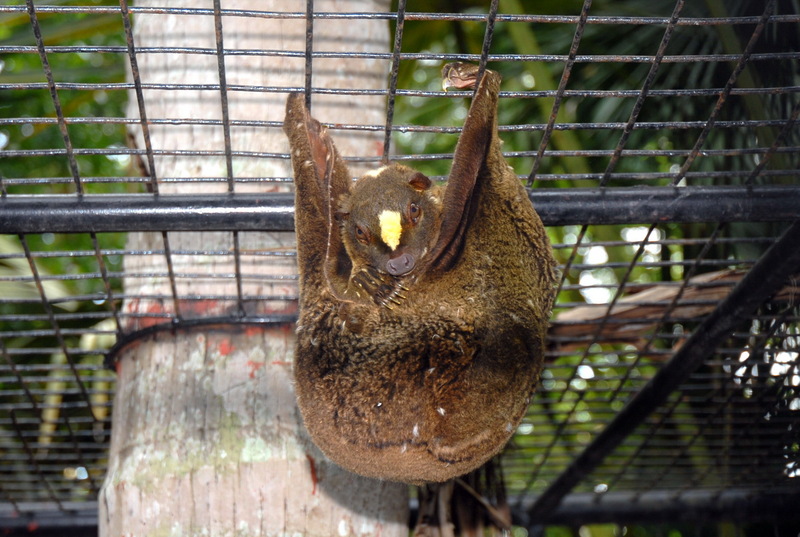Philippine Flying Lemur (Cynocephalus volans) - Wiki Philippine Flying Lemur
From Wikipedia, the free encyclopedia
[Photo] Captive Philippine Flying Lemur (Cynocephalus volans) taken at the python sanctuary in Santa Fe Alburquerque, Bohol. Photo by Pinay. Date 20 July 2006. License: public domain.
The Philippine Flying Lemur (Cynocephalus volans) is one of two species of flying lemurs, the only two colugo species in the family Cynocephalidae.
Distribution
The Philippine Flying Lemur is endemic to the Philippines. Its population is concentrated in the Mindanao region and Bohol.
Characteristics
Although called a flying lemur, it cannot fly and is not a lemur, the endemic primates found in Madagascar and the Comoro Islands. The Philippine Flying Lemur is one of the two species of the order Dermoptera. The other species is the Malaysian Flying Lemur.
An average Philippine Flying Lemur weighs about 1 to 1.7 kilograms and is 14 to 17 inches long. It has a wide head, small ears and big eyes. Its clawed feet are large and webbed for fast climbing and for gliding. Its 12-inch tail is connected to the forelimbs via a patagium. This membrane helps it glide distances of 100 meters or more, useful for finding food and escaping predators such as the Philippine Eagle. Its 34 teeth resembles that of a carnivore but the Philippine Flying Lemur eats mainly fruits, flowers and leaves. It is nocturnal and stays in hollow trees or cling on dense foliage during daytime. The female Philippine Flying Lemur usually gives birth to one young after a two-month gestation period. The young is helpless and attaches itself to its mother's belly, in a pouch fashioned from the mother's skin flaps.
Habitat
The Philippine Flying Lemur is arboreal and usually reside in primary and secondary forests. However, some wander into coconut, banana and rubber plantations. They are considered as pests since they eat fruits and flowers and are hunted down by humans. Its flesh is also cooked as a delicacy and its fur is used as material for native caps. The IUCN has declared the species vulnerable due destruction of lowland forests and hunting.
http://en.wikipedia.org/wiki/Philippine_Flying_Lemur
| The text in this page is based on the copyrighted Wikipedia article shown in above URL. It is used under the GNU Free Documentation License. You may redistribute it, verbatim or modified, providing that you comply with the terms of the GFDL. |
